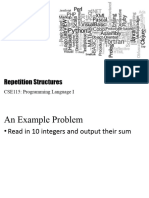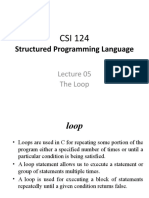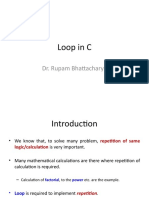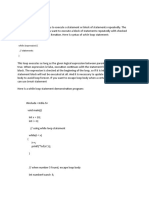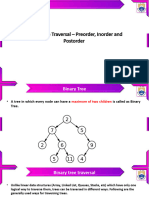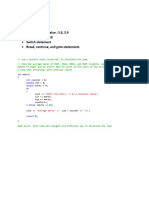0% found this document useful (0 votes)
10 views7 pagesLoops
The document discusses loop statements in C, focusing on the while loop, which executes a block of code repeatedly based on a condition. It includes syntax, examples, common errors, advantages, and disadvantages of using while loops. The document emphasizes the importance of updating loop variables to avoid infinite loops and provides practical examples for better understanding.
Uploaded by
kethanacse29922Copyright
© © All Rights Reserved
We take content rights seriously. If you suspect this is your content, claim it here.
Available Formats
Download as DOCX, PDF, TXT or read online on Scribd
0% found this document useful (0 votes)
10 views7 pagesLoops
The document discusses loop statements in C, focusing on the while loop, which executes a block of code repeatedly based on a condition. It includes syntax, examples, common errors, advantages, and disadvantages of using while loops. The document emphasizes the importance of updating loop variables to avoid infinite loops and provides practical examples for better understanding.
Uploaded by
kethanacse29922Copyright
© © All Rights Reserved
We take content rights seriously. If you suspect this is your content, claim it here.
Available Formats
Download as DOCX, PDF, TXT or read online on Scribd
/ 7


















